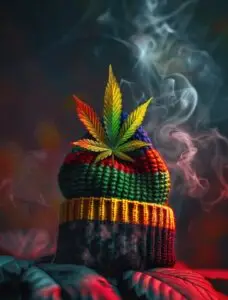Narcotic trafficking, the phenomenon, which started as an organised cross border crime has now emerged as a threat to nation states because of its diabolic alliance with terrorist groups. The Golden Crescent is the largest producer of illicit opium. Afghanistan and Pakistan alone shared nearly 6000 metric tons of the total illicit production in 1999. It is a matter of serious concern to India, because these drugs are the major source for funding Pak-sponsored terrorism in this country. And also because India is the only licit supplier of opium to the international pharmaceutical industry, which generates approximately Rupees 209 crores per annum (1999) as revenue from export. The economy of Pak-Afghan frontier is dependent on the production of poppy and cannabis. The drug money is being floated in an unorganised but systematic manner into the Indian money market thereby damaging financial institutions. Therefore, the illicit drug trafficking from Afghanistan and Pakistan threatens both the polity and the economy of India. Apparently, this demands serious consideration from both the policy makers and the law enforcement agencies before it gets too late for action.

Narco-terrorism refers to the nexus between narcotics and terrorism. This paper examines different aspects of linkage between the two and its implications for India’s security. Since the sources of terrorism in India lie beyond the domestic frontiers, this study also highlights growth of illicit narcotics trade in Pakistan, which funds terrorist activities in India. Afghanistan and the NWFP of Pakistan are the biggest producers of opium in the world, which generates huge sums of money in the international market. The drug proceeds are used by the Pakistan government and the non-government agencies to destabilise India. These two issues are vital in the regional politics of South Asia and the security environment of India.
Sponsoring terrorism is an expensive affair and money for killing, kidnapping and sabotage does not come through proper channels. It comes through illegal and unofficial channels. The market value of narcotic drugs is much higher than any consumer products in the world. It fetches voluminous amounts of money and that too in hard cash. For instance, one kilogram of heroin from the Golden Crescent that costs approximately one lakh rupees in South Asia fetches nearly a crore of rupees in the US market. The figure varies from place to place, which further depends on the law and order situation. The price for heroin originating from the Golden Crescent ranges from Rs. 30 lakhs to Rs. one crore a kg.1 It is worth noting that Pakistani heroin and Colombian marijuana are the most demanded narcotic drugs in the US and the European countries. The volume of money these drugs generate in the West is mind boggling. It is because of the enormous money involved in the illicit drug trade that terrorists have established links with drug traffickers, smugglers and underworld dons to meet the expenses for ‘operation terrorism’.
The word narco-terrorism was used for the first time in the US when drug smugglers in Bolivia, Colombia, Peru, Nicaragua and other Central American countries organised the illegal trade as a profession and ran a parallel government. These countries produce enormous quantities of cocaine and cannabis. As a matter of fact, the economy of this region depends on cultivation and production of cocaine and cannabis. Besides being a neighbour the US is the biggest market for narcotics. The growing population of drug addicts compelled the US government to respond to the situation. Its realisation, however, came much later i.e. when President Reagan decided to fight against the leftist movements in Latin American countries during the 1980s. Narco-terrorism became an issue for the first time during this period.
Author : Kshitij Prabha, Associate Professor IDSA
https://ciaotest.cc.columbia.edu/olj/sa/sa_jan01prk01.html#txt11


